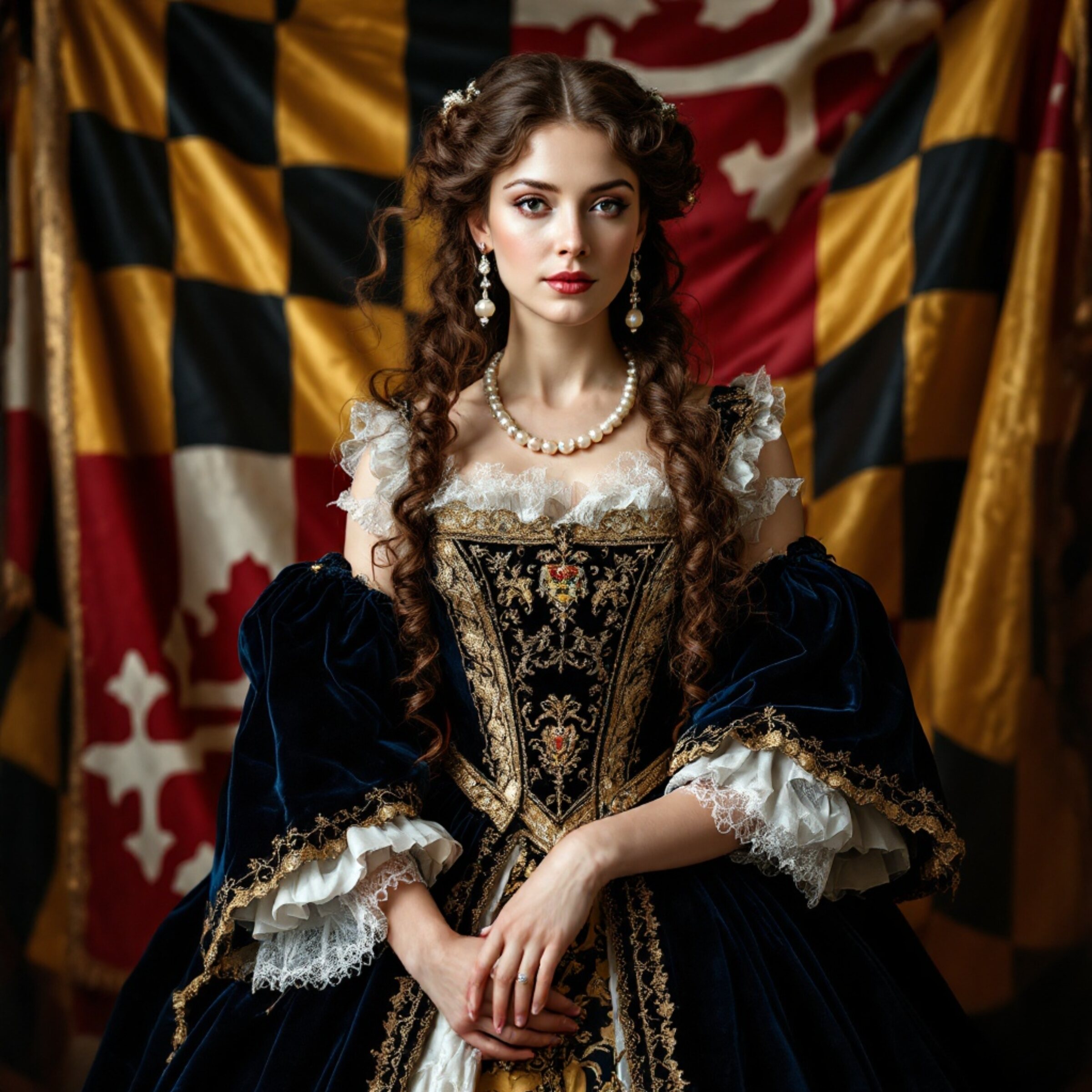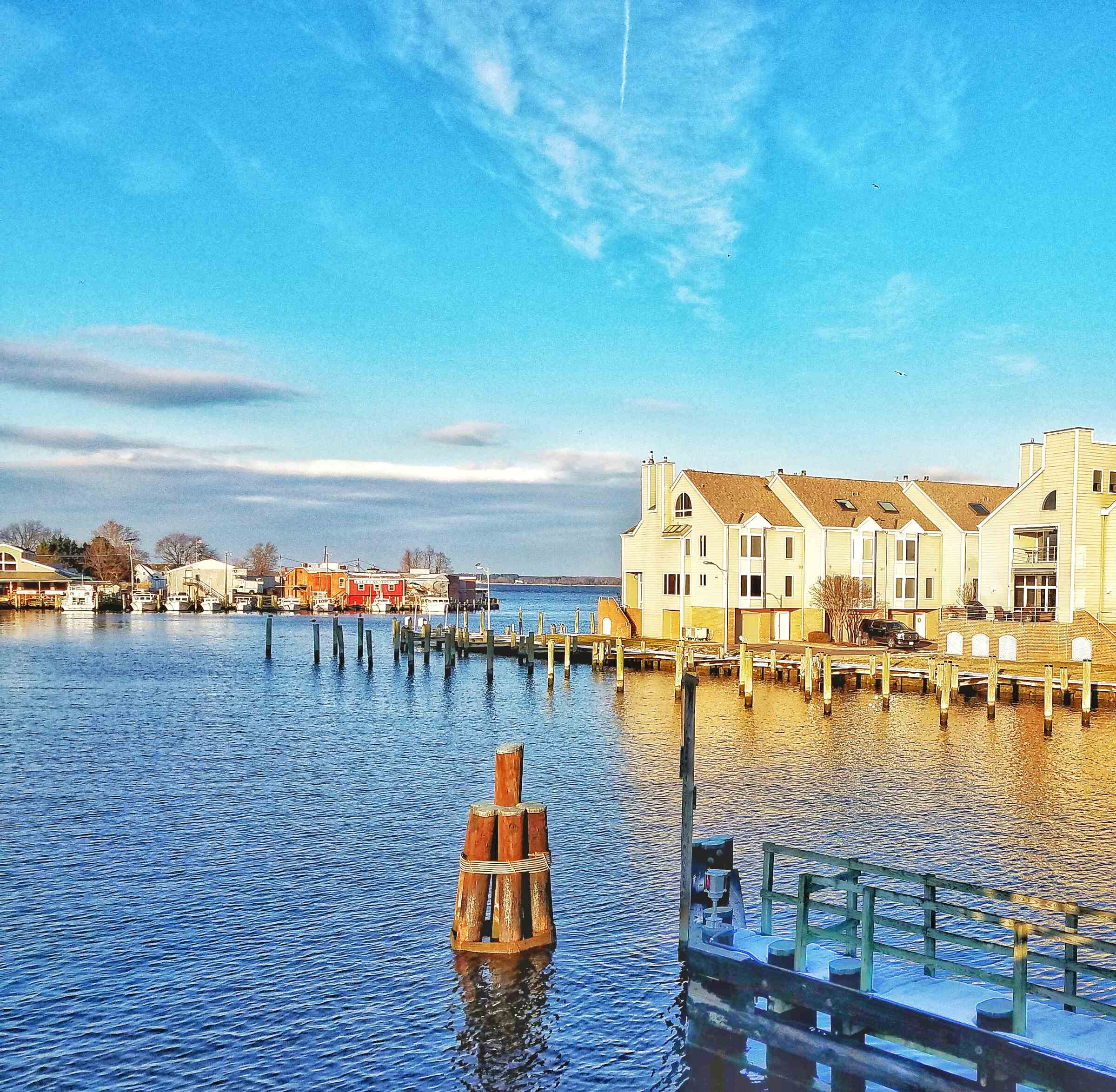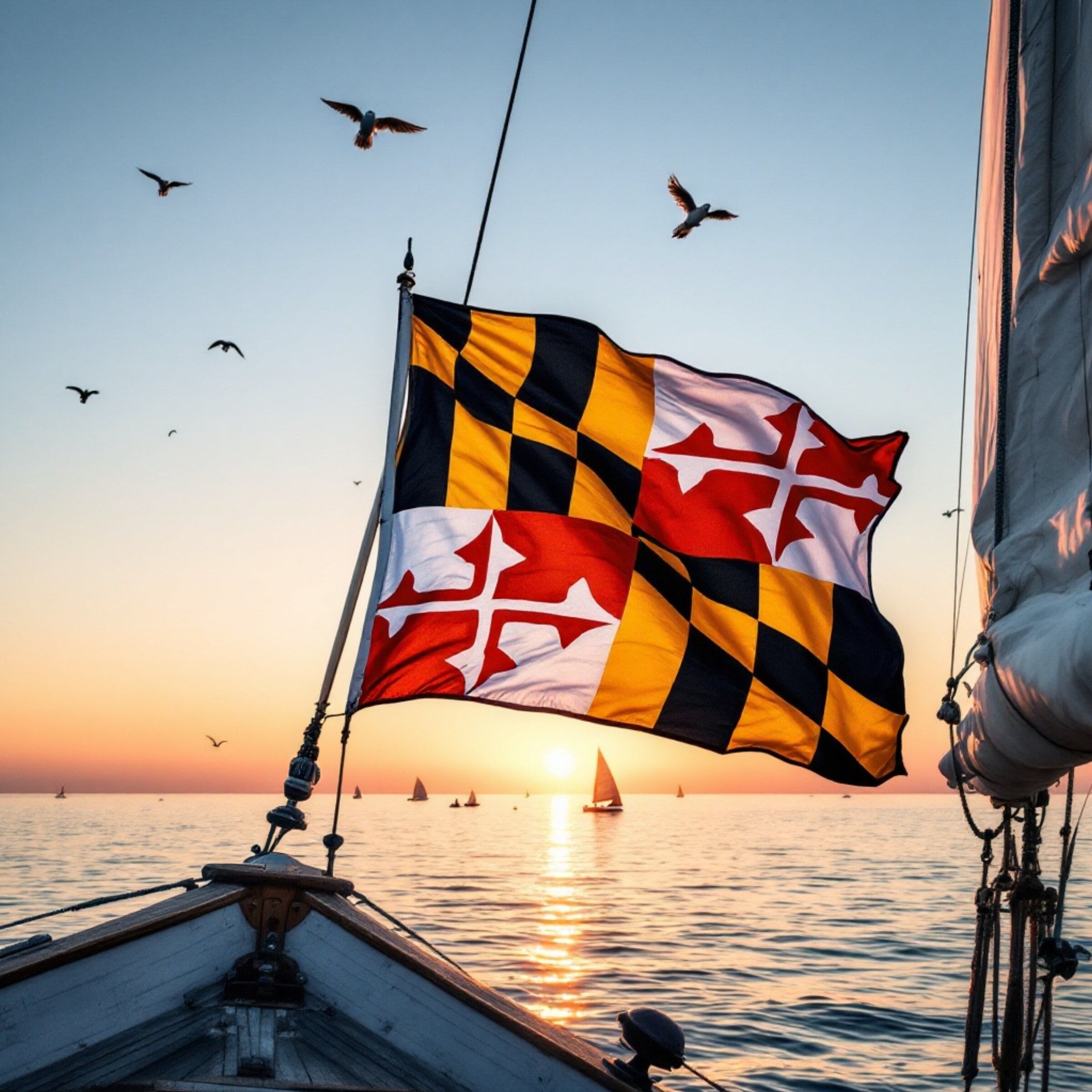Discover Maryland's Rich History
Welcome to our journey through the rich and vibrant history of Maryland! From its founding in 1634 to its pivotal role in American history, Maryland is a treasure trove of fascinating stories and cultural milestones. In this post, we’ll explore the significant events, notable figures, and unique heritage that have shaped the Old Line State. Whether you're a history buff, a curious traveler, or someone looking to learn more about this diverse region, get ready to uncover the intriguing tapestry that makes Maryland truly special!
Exploring the Rich Tapestry: Unraveling the History of Maryland
Embark on a captivating journey through time as we delve into the vibrant tapestry of history woven within the boundaries of Maryland. From the early Indigenous tribes that shaped the land to the pivotal role the state played in the founding of the United States, Maryland's past is a complex and fascinating narrative waiting to be unraveled.
Discover the stories of key historical figures, pivotal events, and cultural influences that have left an indelible mark on the state. From the bustling ports of Baltimore to the tranquil shores of Chesapeake Bay, every corner of Maryland holds a piece of history waiting to be explored. Join us as we peel back the layers of time and unearth the rich heritage that defines this diverse and dynamic state.
Get ready to uncover the hidden gems and untold tales that make Maryland a historical treasure trove like no other.
Native American heritage in Maryland
The history of Maryland begins long before European settlers arrived, with the land being home to various Indigenous tribes for thousands of years. The Algonquin-speaking peoples, including the Piscataway and the Nanticoke, were some of the primary inhabitants of the region. These tribes thrived in the diverse ecosystems of Maryland, utilizing the abundant resources of the land and waterways. They engaged in fishing, hunting, and agriculture, cultivating crops such as maize, beans, and squash, which were essential to their diet and culture. Their deep connection to the land is reflected in their traditions, social structures, and spiritual beliefs.
Indigenous communities in Maryland had rich cultural practices and governance systems, often forming complex societies with distinct languages and customs. The Piscataway Confederacy, for example, was a prominent alliance of several tribes that worked together for mutual benefit, particularly in trade and defense against outside threats. Their social structures were matrilineal, whereby lineage and inheritance were traced through the mother’s side, which significantly influenced their societal dynamics. The tribes maintained a harmonious relationship with the environment, practicing sustainable hunting and agriculture, ensuring that resources were available for future generations.
As European settlers arrived in the early 17th century, the Indigenous populations faced significant challenges. Diseases brought by Europeans decimated their communities, and conflicts over land and resources soon followed. The arrival of settlers marked the beginning of a tumultuous period for Native Americans, whose lands were progressively encroached upon. Despite these challenges, the resilience of Maryland's Indigenous tribes remains evident today, as they strive to preserve their heritage through cultural revitalization efforts and advocacy for their rights. The rich tapestry of Maryland's history is incomplete without acknowledging the profound impact of its Native American heritage.
Colonial era and the founding of Maryland
The colonial era in Maryland began in 1634 when English settlers, led by Cecil Calvert, the second Lord Baltimore, arrived at St. Mary's City. Calvert envisioned Maryland as a place of religious tolerance, particularly for Catholics facing persecution in England. This vision attracted a diverse group of settlers, including Catholics, Protestants, and even Jews, making Maryland one of the first colonies to foster a spirit of religious pluralism. The establishment of the Maryland Toleration Act in 1649 further solidified this commitment to religious freedom, allowing individuals to practice their faith without fear of persecution.
Maryland's colonial economy was initially centered around tobacco cultivation, which became a lucrative cash crop. The fertile land, combined with the favorable climate, made the region ideal for tobacco farming. This economic boom led to the establishment of plantations, which in turn created a demand for labor. Initially, indentured servants were brought from Europe, but as the need for labor grew, enslaved Africans were increasingly imported. This shift not only transformed Maryland's economy but also laid the groundwork for the state's complex social hierarchies and racial dynamics that would resonate throughout its history.
The colonial period was not without conflict. Tensions between settlers and Indigenous tribes escalated, leading to violent confrontations and the gradual displacement of Native peoples. Additionally, internal divisions among the settlers, particularly between Catholics and Protestants, resulted in political strife. The Protestant Rebellion of 1689 exemplified these tensions, leading to a brief period of Protestant control and the marginalization of Catholics. Despite these challenges, Maryland continued to thrive as a center of trade and culture, with its capital, Annapolis, emerging as a vibrant hub of colonial life.
Maryland's role in the American Revolution
As tensions between the American colonies and Great Britain escalated in the 1760s and 1770s, Maryland found itself at the forefront of revolutionary fervor. The state's strategic location, bordering the North and South, made it a crucial player in the fight for independence. Marylanders were instrumental in the formation of the Continental Congress and actively participated in the early efforts to resist British rule, including the Sons of Liberty's protests against taxation and British governance. This spirit of rebellion was embodied in events such as the burning of the Peggy Stewart, which symbolized the colonies' defiance.
Maryland contributed significantly to the military efforts during the American Revolution. The Maryland Line, a brigade of troops from the state, became renowned for its bravery and effectiveness in various battles. Notably, they played a key role in the Battle of Brooklyn and the Siege of Yorktown, showcasing their unwavering commitment to the cause of independence. Additionally, Maryland's strategic ports, like Baltimore, served as vital supply points for troops and provisions, further solidifying the state's importance in the revolutionary effort.
The post-war period brought significant changes to Maryland's political landscape. The ideals of liberty and self-governance that fueled the revolution prompted discussions about statehood and governance. Maryland ratified the United States Constitution in 1788, becoming the seventh state to join the Union. The state’s commitment to a representative government and civil rights continued to shape its identity in the years that followed. Maryland’s involvement in the American Revolution not only cemented its role in the birth of the nation but also set the stage for ongoing debates about freedom and equality that would resonate through its history.
The Civil War and Maryland's unique position
Maryland's unique geographical position as a border state during the Civil War placed it at the heart of a national conflict that would shape its future. Despite being a slave state, Maryland never seceded from the Union, making its stance particularly complex. The state was deeply divided, with strong sentiments on both sides of the conflict. Many Marylanders supported the Union, while others sympathized with the Confederacy, creating a volatile atmosphere that led to internal strife and violence.
The significance of Maryland was highlighted during the Battle of Antietam in 1862, one of the bloodiest battles in American history. This pivotal confrontation not only marked a turning point in the war but also led to President Abraham Lincoln issuing the Emancipation Proclamation, which declared the freedom of enslaved people in Confederate-held territories. The battle's aftermath revealed the deep scars of war on Maryland's landscape and its people, as communities grappled with loss and division. The preservation of the Union became a rallying cry for many, but the legacy of slavery and racial tensions continued to loom large.
In the years following the Civil War, Maryland faced the daunting task of rebuilding and reconciling its divided past. The state implemented measures to integrate formerly enslaved individuals into society, but the struggle for equality remained a significant challenge. The Reconstruction era witnessed both progress and setbacks, as African Americans sought to assert their rights amidst persistent discrimination. Maryland's Civil War experience, with its complexities and contradictions, helped shape the state's identity, fostering a narrative of resilience and ongoing struggle for justice that persists to this day.
Industrialization and growth in the 19th century
The 19th century marked a period of remarkable transformation for Maryland, as industrialization began to take root and reshape the state's economy and society. The expansion of transportation networks, particularly the establishment of railroads, facilitated the movement of goods and people, connecting Maryland to broader markets. Cities like Baltimore emerged as industrial hubs, with factories and shipyards springing up to accommodate the growing demand for manufactured goods. This shift from an agrarian economy to an industrial one brought about significant changes in the workforce and urbanization.
The rise of industry in Maryland was accompanied by a demographic shift, as rural populations migrated to cities in search of work. Immigrants from Europe, particularly from Germany and Ireland, flocked to Maryland in search of better opportunities, contributing to the cultural diversity of the state. The influx of new residents brought fresh ideas, traditions, and labor, enriching the social fabric of Maryland. However, this rapid industrial growth also led to challenges, including labor disputes, overcrowded living conditions, and environmental degradation, as factories often prioritized production over worker welfare and ecological concerns.
By the late 19th century, Maryland had established itself as a key player in various industries, including shipbuilding, textiles, and steel production. The state's strategic location along the Chesapeake Bay and its access to major waterways facilitated trade and commerce, allowing Maryland to thrive in the evolving economic landscape. The legacy of this industrialization period is still visible today, as many of the cities and towns developed during this time continue to be centers of economic activity, innovation, and cultural significance, reflecting the enduring impact of the 19th-century industrial revolution on Maryland's identity.
The Civil Rights Movement in Maryland
The Civil Rights Movement of the 1960s marked a pivotal era in Maryland’s history, as activists fought against racial discrimination and social injustice. Maryland, with its complicated legacy of slavery and segregation, became a battleground for civil rights advocates seeking to dismantle systemic racism. The movement gained momentum through grassroots organizing, legal challenges, and public demonstrations, with many Marylanders standing in solidarity for equality. Key figures emerged from the state, including civil rights leaders, educators, and everyday citizens who bravely challenged the status quo.
One notable event in Maryland's civil rights struggle was the integration of public schools following the landmark Supreme Court case Brown v. Board of Education in 1954. The ruling declared racial segregation in public schools unconstitutional, prompting a wave of activism across the nation. In Maryland, efforts to desegregate schools were met with resistance, but local activists and community leaders worked tirelessly to ensure equal access to education for all students. The fight for equitable schooling became a rallying point, highlighting the broader struggle for civil rights and social justice.
Maryland also played a significant role in the broader Civil Rights Movement, with events such as the 1963 March on Washington, where thousands of Marylanders joined in the fight for racial equality. The state saw the formation of various civil rights organizations, including the Maryland Chapter of the NAACP, which worked tirelessly to combat discriminatory practices in housing, employment, and education. The legacy of the Civil Rights Movement continues to resonate in Maryland today, as ongoing efforts to address racial disparities and promote social justice reflect the enduring spirit of those who fought for equality in the past.
Famous figures in Maryland's history
Maryland's rich history is adorned with an array of influential figures who have left an indelible mark on the state and the nation. One of the most prominent figures is Frederick Douglass, an escaped slave who became a leading abolitionist, orator, and statesman. Born in Talbot County, Douglass's writings and speeches advocated for the rights of African Americans and women, making him a key figure in the fight for social justice. His autobiography, "Narrative of the Life of Frederick Douglass, an American Slave," remains a powerful testament to the struggles faced by enslaved individuals and the quest for freedom.
Another notable Marylander is Harriet Tubman, also known as the "Moses of her people." Born into slavery on the Eastern Shore, Tubman escaped and subsequently risked her life to rescue others through the Underground Railroad. Her bravery and commitment to freedom for all enslaved people have made her a symbol of courage and determination. Tubman's legacy is celebrated across the nation, and her contributions during the Civil War as a spy and scout for Union forces further exemplify her unwavering dedication to justice.
In addition to these iconic figures, Maryland has produced numerous politicians, scientists, and cultural icons who have shaped the state’s identity. Thurgood Marshall, the first African American Supreme Court Justice, was instrumental in the fight for civil rights and played a pivotal role in dismantling segregation through his work with the NAACP. His legacy continues to inspire generations as a beacon of hope and a testament to the power of law in achieving social change. Maryland’s history is a tapestry woven with the contributions of these remarkable individuals, whose lives and legacies continue to resonate within the state and beyond.
Historic sites to visit in Maryland
Maryland is home to a wealth of historic sites that offer a glimpse into the state's rich past. One of the most significant landmarks is Fort McHenry in Baltimore, renowned for its role in the War of 1812. It was here that Francis Scott Key penned "The Star-Spangled Banner," inspired by the sight of the American flag still flying after a fierce battle. Today, visitors can explore the fort, learn about its history, and enjoy the beautiful views of the harbor, making it a must-visit destination for history enthusiasts.
Another important site is the Antietam National Battlefield, where one of the bloodiest battles of the Civil War took place. The battlefield preserves the memory of the soldiers who fought and died there, offering visitors a chance to reflect on the sacrifices made for freedom. With its extensive walking trails, historic monuments, and visitor center, Antietam provides an educational experience that highlights the complexities of the Civil War and its impact on Maryland and the nation.
In addition to these sites, the historic town of St. Mary's City, the first capital of Maryland, offers a unique opportunity to explore colonial history. This living history museum features reconstructed buildings, archaeological sites, and interactive exhibits that immerse visitors in the life of early settlers. St. Mary's City serves as a reminder of Maryland's origins and the diverse cultures that contributed to its development. As visitors traverse the state, they will discover a myriad of historic places that tell the story of Maryland's past and its ongoing journey.
Oxford, Maryland - Explore MD From A Central Location
Oxford, Maryland, with its charming small-town atmosphere and rich historical tapestry, serves as an ideal base for exploring the state's captivating past. Nestled on the Eastern Shore, Oxford boasts an array of historic sites, including colonial structures and picturesque waterfronts that harken back to the 17th century. Visitors can admire the well-preserved architecture and learn about the town's role in the maritime trade, making it a delightful backdrop for history enthusiasts. Moreover, Oxford's proximity to other historical towns like Easton and St. Michaels enhances the experience, allowing for seamless exploration of local museums, galleries, and significant landmarks that define Maryland’s heritage.
At the heart of Oxford's appeal lies Sandaway Suites & Beach, a charming waterfront boutique hotel that blends comfort with historical charm. Its stunning location on the banks of the Tred Avon River offers guests a serene escape after a day of exploration. Sandaway provides easy access to a multitude of historical attractions, from the nearby Chesapeake Bay Maritime Museum to the rich narratives of the Underground Railroad. After a day spent soaking in the history, guests can return to Sandaway to unwind on the beach, enjoy picturesque sunsets, and revel in the unique blend of relaxation and education that makes their stay memorable. With its perfect combination of location and amenities, Sandaway Suites & Beach truly enhances the experience of discovering Maryland's fascinating past.
Conclusion: Maryland's legacy and ongoing historical significance
Maryland's history is a rich tapestry woven from the threads of diverse cultures, pivotal events, and remarkable individuals. From its Indigenous roots to its role in the founding of the United States, the state has played a significant part in shaping the narrative of American history. The challenges and triumphs experienced throughout its past have contributed to the unique identity that Maryland holds today, characterized by its commitment to diversity, resilience, and progress.
The legacy of Maryland's historical journey continues to influence contemporary society. The struggles for civil rights, social justice, and equality resonate in the ongoing efforts to address systemic issues within the state. As Marylanders reflect on their history, they are reminded of the importance of preserving their heritage while striving for a more inclusive and equitable future. The stories of resilience and courage from the past serve as a guiding light, inspiring new generations to continue the work of those who came before them.
As we explore the rich tapestry of Maryland's history, we uncover not only the triumphs and tribulations of its past but also the promise of its future. The ongoing significance of Maryland's historical narrative invites us to engage with its heritage, learn from its lessons, and celebrate the diverse contributions that have shaped the state. Maryland stands as a testament to the enduring spirit of its people, reminding us that history is not merely a record of what has been, but a foundation upon which we build a shared future.
 Maryland was named after Queen Henrietta Maria, the wife of King Charles I of England and the name “Maryland” was proposed by the King himself.
Maryland was named after Queen Henrietta Maria, the wife of King Charles I of England and the name “Maryland” was proposed by the King himself.Other Articles you may like

As you gear up for a day of sun-soaked fun at Sandaway Suites & Beach in Maryland, it's essential to prioritize sun safety while reveling in the beautiful surroundings. The warm sands and sparkling waters beckon, but sun exposure can pose risks that can dampen your day. By arming yourself with the ultimate beach sun safety tips, you can ensure that your beach experience is not only enjoyable but safe too. From selecting the right sunscreen to staying hydrated and knowing when to seek shade, these strategies will help protect your skin and keep your spirits high. So grab your beach towel, prepare for a memorable adventure, and dive into our essential guide to sun safety at Sandaway Suites & Beach! Your day of fun in the sun is just a few tips away.


